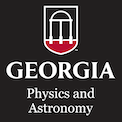Quantum computing promises new approaches to solving hard computational problems by using the principles of quantum mechanics. At ORNL, we are using these principles to solve scientific problems by taking advantage of recent developments in quantum computing hardware and software. I will present how we are developing algorithms for simulating quantum mechanical systems and applying them to application-specific problems in chemistry, nuclear physics, and applied mathematics. With these applications, we have developed a quantum computing ecosystem that highlights the interdisciplinary effort needed to translate scientific computing to the new hardware platforms. Alongside software applications and hardware infrastructure, I will also discuss how to measure performance in quantum computers, the challenges looming for near- term demonstrations, and the milestones expected on the way toward new scientific discoveries with quantum computing.
Biography:
Dr. Travis Humble is a Distinguished Scientist at Oak Ridge National Laboratory and director of the lab's Quantum Computing Institute. He oversees research and development of quantum computing technologies for ORNL and in 2016 received the prestigious Department of Energy Early Career Research Award. Travis holds a joint faculty appointment with the University of Tennessee Bredesen Center for Interdisciplinary Research and Graduate Education, where he works with students to develop energy-efficient computing.


